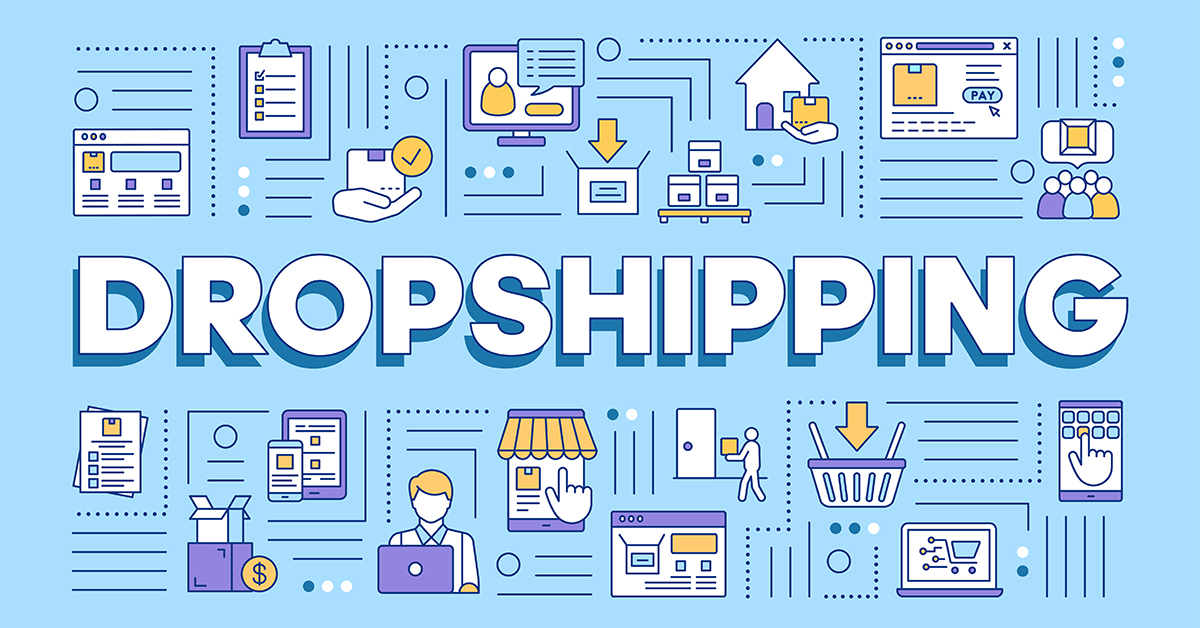In the dynamic realm of e-commerce, mastering financial strategies is the cornerstone of building a successful dropshipping business. Dropshipping offers entrepreneurs a low-risk entry into online retail, but with a solid grasp of financial principles, success can be achieved. This article aims to demystify the financial intricacies of dropshipping and provide actionable insights for entrepreneurs looking to thrive in this competitive landscape.
Understanding the Basics of Dropshipping
Dropshipping is a retail fulfillment method where a store doesn’t keep the products it sells in stock. Instead, when a store sells a product, it purchases the item from a third party and has it shipped directly to the customer. This eliminates the need for inventory storage and allows entrepreneurs to focus on marketing and sales.
A typical dropshipping arrangement, the dropshipper partners with suppliers who fulfill orders on their behalf. When a customer orders on the drop shipper’s website, the order details are forwarded to the supplier, who then ships the product directly to the customer. The dropshipper earns a profit by marking up the price of the products sold.
Setting the Foundation: Financial Planning for Dropshipping
Financial planning lays the groundwork for success in dropshipping. It involves setting clear financial goals, creating budgets, and establishing systems for tracking revenue and expenses. Without a solid financial plan, it’s easy to overspend or misallocate resources, leading to financial instability.
Budgeting is crucial for managing cash flow and ensuring the sustainability of your dropshipping business. Start by identifying your fixed and variable costs, including website hosting fees, marketing expenses, and supplier payments. Allocate funds strategically to maximize profitability and minimize waste.
To accurately assess the financial health of your dropshipping business, you must understand your costs and expenses. This includes not only the cost of goods sold (COGS) but also overhead costs such as marketing, website maintenance, and customer service. Regularly review and analyze your expenses to identify areas for cost savings.
Product Selection and Profitability Analysis
Choosing the right niche is critical to the success of your dropshipping business. Look for high-demand niches, low competition, and products that offer sufficient profit margins. Conduct thorough market research to identify trends and opportunities within your chosen niche.
Stay abreast of market trends and consumer preferences to ensure your product offerings remain relevant. Use tools like Google Trends, social media platforms, and industry reports to gauge demand and identify emerging trends. Continuously adapt your product selection to meet evolving customer needs.
Profit margins are the lifeblood of any dropshipping business. Calculate your gross profit margin by subtracting the cost of goods sold from the selling price and dividing it by the selling price. Aim for products with healthy profit margins to ensure that your business remains profitable in the long term.
Pricing Strategies for Maximum Profitability
Pricing decisions are influenced by various factors, including product costs, competitor pricing, perceived value, and market demand. Consider both internal and external factors when setting prices for your dropshipping products to maximize profitability while remaining competitive.
Markup and margin are two commonly used pricing metrics in dropshipping. Markup refers to the percentage added to the cost of goods sold to determine the selling price, while margin represents the percentage of revenue that is profit. Understanding the difference between markup and margin is essential for accurate pricing decisions.
Dynamic pricing allows dropshippers to adjust prices in real-time based on demand, competitor pricing, and inventory levels. Implement dynamic pricing strategies to optimize revenue and remain competitive in a rapidly changing marketplace. Explore “is dropshipping still profitable” for better insight.
Supplier Relations and Negotiation Tactics
Building solid relationships with reliable suppliers is essential for the success of your dropshipping business. Look for suppliers with a track record of quality products, timely shipping, and responsive customer service. Consider factors such as product selection, pricing, and shipping times when evaluating potential suppliers.
Nurturing relationships with suppliers is critical to securing favorable pricing and terms. Communicate openly and transparently with your suppliers, and prioritize building trust and mutual respect. Consider establishing long-term partnerships with suppliers who share your commitment to quality and customer satisfaction.
Practical negotiation skills can help you secure better pricing and terms with your suppliers. Prepare thoroughly before entering negotiations, and clearly articulate your needs and expectations. Be willing to compromise and explore creative solutions that benefit both parties.
Legal and Tax Considerations for Dropshipping Businesses
Choose the proper legal structure for your dropshipping business to minimize tax liabilities and protect personal assets. Consult with a qualified tax advisor or legal professional to determine the most appropriate structure based on your unique circumstances and long-term goals.
Stay informed about e-commerce regulations and compliance requirements that may impact your dropshipping business. Ensure that your website and marketing materials comply with consumer protection laws, data privacy regulations, and industry-specific regulations. Keep abreast of changes in rules and adjust your business practices accordingly.
Expanding into international markets offers significant growth opportunities for dropshipping businesses but also introduces complex tax and regulatory considerations. Familiarize yourself with international tax laws, customs duties, and import/export regulations that may affect your cross-border sales. Consider partnering with tax professionals or legal advisors with expertise in international taxation.
Conclusion
Mastering financial strategies is essential for success in the competitive world of dropshipping. By understanding the basics of dropshipping, setting a solid financial foundation, and implementing effective financial management practices, entrepreneurs can build profitable and sustainable e-commerce businesses. With careful planning, strategic decision-making, and a commitment to continuous improvement, dropshipping entrepreneurs can unlock the full potential of their businesses and achieve long-term success.











